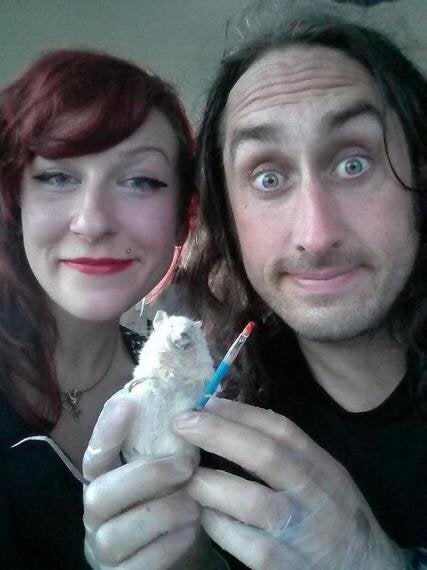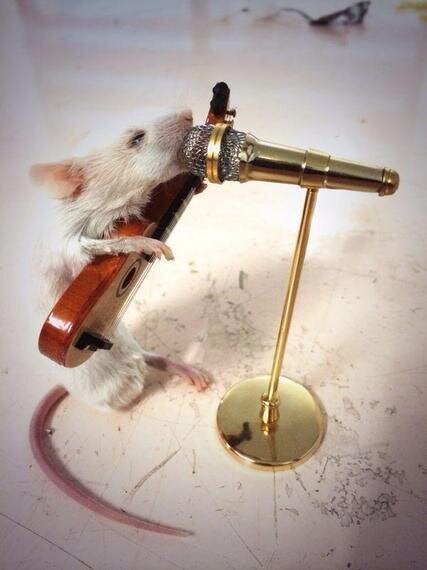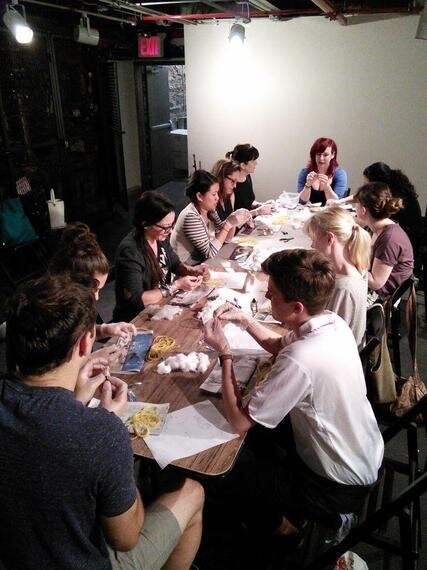When Ross Noble asked me on the new series of his show Freewheeling last week whether I was an "intermediate taxidermist", I was a bit taken back (Series two, Episode five, it's actually hilarious). I'm not even sure what it means to be at an intermediate level of taxidermy in this day. I said to him that I supposed so because, well, I'm not a beginner, but I'm not what most in the taxidermy world would consider a "professional". But thinking about it, actually I am a professional.
I have stuffed hundreds of mice, starting what i call my "art", in the dim light of my own bedroom, reading forums, watching videos about taxidermy, ordering supplies, filling my freezer with dead things my cat brought in, and seeing what personally did and didn't work with my mounts. It's a learning process and I'm still learning everyday, but that does not make me any less a professional. Techniques vary and every taxidermist does their work slightly different. Most do what they simply find works for them, and most have learned the same way I have, through experience, practice, asking questions, reading forums, apprenticeships, etc. (Note: There is no official school for taxidermy in the UK).

Ross Noble and I stuffing mice
I probably never will be a "professional taxidermist" in the eyes of many traditional taxidermists, unless they start taxidermy competitions featuring pistol-toting mice, squirrels wearing fedoras, or winged rats eating camembert on toast. But to them this means that I am no expert on traditional, meticulously measured, true-to-life mounts, and I don't claim to be. What I am a professional in is making taxidermy into something different, something a bit more creative.
A controversial subject recently in the taxidermy world seems to be beginner's courses, such as the ones I teach, which have been popping up around England and even in the US, of those teaching small animal taxidermy, and mainly rodents. Like anything that becomes popular, these have received a lot of criticism from other taxidermists and enthusiasts for: A. Not being proper taxidermy and B. Not being taught by "real taxidermists".
For instance, the popular artist Polly Morgan told The Independent, "I'm all for people learning, and I'm not trying to protect myself. I just wish people would learn properly. Unfortunately, the more popular something becomes, the less people feel they have to put into it to get noticed in that craft. These classes that have popped up are like club nights - they're a way to get people down to bars or restaurants. I think it's not particularly tasteful to fetishise taxidermy in this way. You see these young women with corpses draped round their necks, almost glorifying and sexualising it. It's a shame."
There will always be criticism and especially when something is popularised. This criticism is usually served with a side of self-pride, but also fear. It is totally understandable to be upset that someone with less experience than yourself is teaching something to other people. I get that that is threatening. But honestly, that's just life. Some people take pride in teaching other people what they know, showing them that they can give something a try, and that it is not exclusive to those who practice tradition forms of similar work. To be honest, most of the time everyone is winging it at life anyway, and while there are definitely wrong ways to do taxidermy (such as not cleaning enough muscle or fat from the skin, so it starts degrading immediately), there are many many ways to do it right, so that your piece is adequately preserved and will stay that way virtually forever. So considering any particular way someone does it as "questionable", if it works for them, is simply a sign of discomfort at the fact that they are doing it at all.

I make taxidermy for art, novelty and fashion. I'm not fetishising death, but starting a conversation around it. I've never claimed to make anything anatomically correct and I think the pieces that more traditional taxidermists do are really impressive and beautiful. I, however, hope that in my work I push the boundaries of taxidermy - as the popular perception of it changes. I want to encourage people to express themselves through it, to look death in the face, peel it back, seeing it inside and out and express themselves through it. People see it as an opportunity for trying something unusual and creating something unique. My classes popularity has proven the point that plenty of people want to give it a go - and really, good on them for trying something new, and learning from other creative individuals who don't live in a world where everything we do must be perfectly aligned with the credibility of the past.
I do think we take experience for granted these days. Just because someone does not have a professional accreditation or an academic degree in the subject does not mean they cannot do the job.
Taxidermy had until recently been considered an art that was dying out (no pun intended). Revivals always work in this way and I am sure traditional taxidermists are getting more work from its popularisation as well.
So for those of you who want to learn, I say take one of the classes! Your first piece won't be perfect and that's okay!
And if you are going to criticize the classes, then at least get to know the people who teach them first. You have no idea what their experience is, who they are, or what their goals are until you actually try to understand where they are coming from.
Book into a class in London or Manchester. Or get in touch if you want to organise a taxidermy workshop in your city or festival.

Mouse taxidermy class, Morbid Anatomy, New York